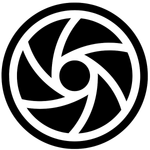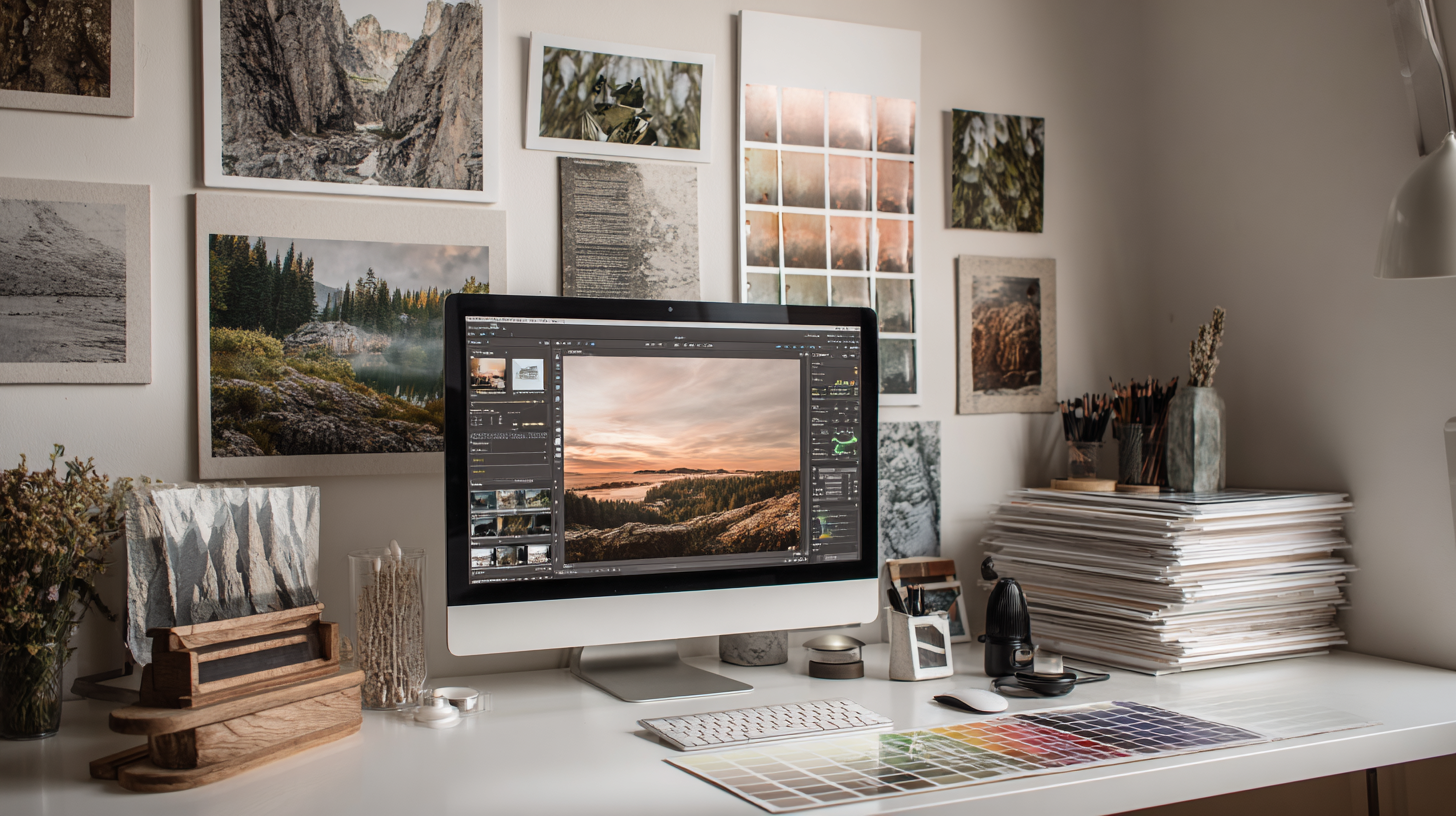Finding the best print on demand for photographers requires navigating technical specifications, business models, and quality standards that directly impact both your artistic vision and commercial success. The print-on-demand landscape has evolved significantly, with 2025 bringing enhanced quality control processes, local production networks, and sophisticated integration capabilities. However, choosing between marketplace exposure, white-label control, or professional lab quality requires understanding each model's technical limitations and revenue implications. This comprehensive analysis examines current POD providers through the lens of actual photographer needs, from color management workflows to real margin calculations, helping you make data-driven decisions for your photography business.
POD models explained: marketplace vs white-label vs pro fine-art labs
The fundamental architecture of print-on-demand services falls into three distinct categories, each optimized for different photographer business models and quality requirements.
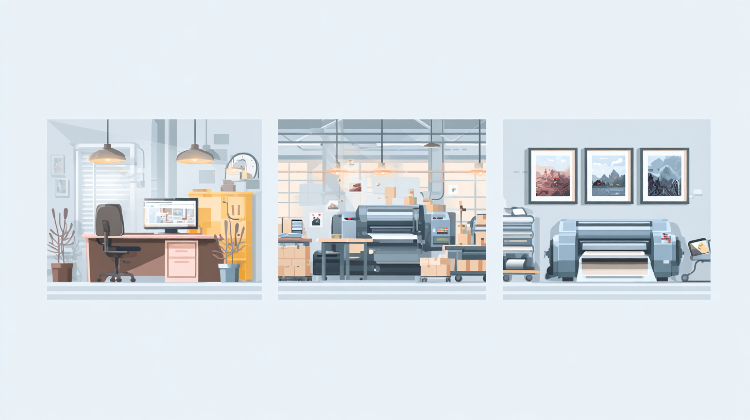
White-label services like Printful and Gelato function as invisible fulfillment partners, allowing photographers complete brand control. Printful operates 12 global facilities with 97% of orders shipping within 5 business days, offering 440+ products, including specialty giclée printing ($5.95-$26.95) with archival inks rated for 75-year fade resistance. Their technical strength lies in ICC color profile support and custom branding options, including $0.99 inside labels and $2.49 outside labels for professional presentation.
Gelato differentiates through its 130+ printing hubs across 30+ countries, enabling 90% local production that reduces both shipping costs and carbon footprint. Their 2025 updates include Magic Mockups powered by AI and price reductions up to 50% on bestselling products, making them particularly attractive for volume-focused photographers. Both providers integrate seamlessly with Shopify, WooCommerce, and major e-commerce platforms through comprehensive APIs.
Marketplace models represented by Fine Art America and Society6 provide built-in customer acquisition but sacrifice margin control. Fine Art America operates 16 manufacturing centers across five countries, allowing artists to set custom markups above base prices while retaining 100% of their markup percentage. However, professional photographers report quality concerns,, including 25MB file compression limits and inconsistent color accuracy that compromise fine art applications.
Society6 underwent major structural changes in March 2025, eliminating artist-controlled pricing in favor of standardized rates with 5-10% commissions. While this simplifies the business model, photographers lose pricing flexibility that's crucial for positioning premium work appropriately.
Professional fine-art labs like Bay Photo Lab, WhiteWall, and Nevada Art Printers represent the premium tier, offering museum-quality output with professional color management. Bay Photo's MetalPrints and silver halide processes deliver 610dpi resolution across 10 professional paper surfaces, targeting photographers requiring consistent quality for client work. WhiteWall, an 8-time TIPA Award winner, provides gallery-standard output with custom color management workflows that professional photographers require for exhibition pieces.
Quality checklist: papers, inks, and color management
Technical print quality forms the foundation of successful photographer POD businesses, requiring an understanding of substrate properties, color workflows, and archival standards that directly impact customer satisfaction and repeat business.
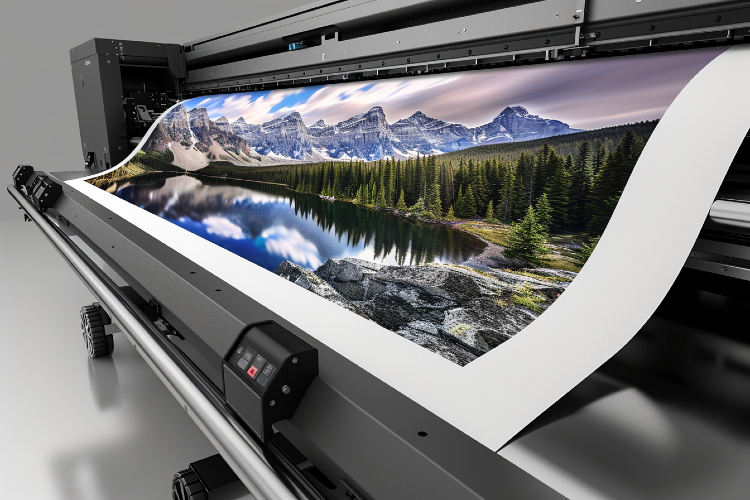
Paper selection significantly impacts both aesthetic outcome and longevity. Luster papers offer semi-gloss finishes (250-315 GSM) that balance color saturation with minimal glare, making them ideal for portraits and wedding photography. Baryta papers, featuring barium sulfate coatings with D-Max ratings typically reaching 2.7, provide superior tonal range for black and white work and fine art applications. Their fiber-based construction delivers 100+ year archival qualities when paired with pigment inks.
Matte papers eliminate surface reflectivity entirely, creating intimate viewing experiences perfect for artistic landscapes and museum presentations. Canvas substrates require specialized mounting systems but offer gallery-wrap presentation options with 1.5" stretcher bars as standard.
Color management workflows separate professional results from amateur output. ICC profiles serve as translation matrices between device color spaces and Profile Connection Space using CIELAB calculations. Professional photographers must create custom profiles for each printer/ink/paper combination using spectrophotometer measurements, as generic profiles compromise color accuracy. Monitor calibration using hardware colorimeters (X-Rite, Calibrite) ensures accurate soft-proofing, with D50 or D65 white point standards (6500K preferred for photography).
Resolution requirements follow strict mathematical relationships: Print Size (inches) = Image Dimension (pixels) ÷ DPI. Standard prints require 300 DPI minimum, while large format installations accept 150-250 DPI due to viewing distance considerations. Output sharpening must be applied after resizing, with different algorithms required for matte versus glossy substrates to compensate for ink spread characteristics.
Print permanence varies dramatically across ink and paper combinations. Professional pigment-based systems deliver 60-400+ year ratings depending on environmental conditions. Epson UltraChrome K3 achieves 108 years of color permanence and 200+ years for black and white, while Wilhelm Imaging Research provides independent testing verification using Blue Wool Scale standards (Level 6+ required for archival claims).
Color accuracy standards follow Delta E tolerance measurements, with ΔE ≤2 representing professional printing standards where color differences become noticeable only under close inspection. Professional monitors require ΔE ≤3 minimum performance with 99%+ sRGB and Adobe RGB coverage for critical color work.
Pricing and real margins with simple math
Understanding actual costs versus potential revenue requires analyzing multiple fee layers that significantly impact photographer profitability across different POD models.
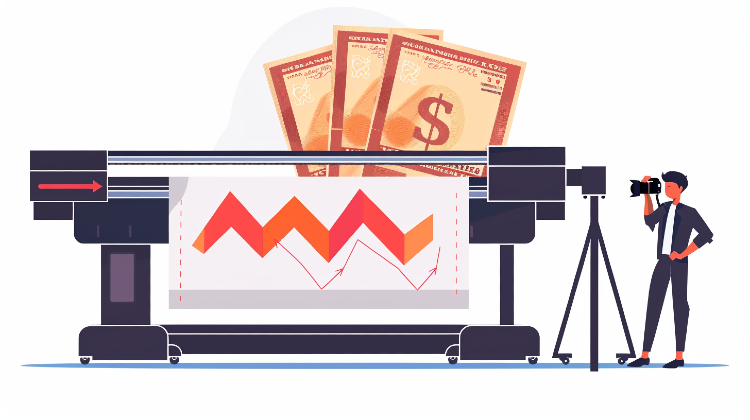
Base production costs vary substantially between providers and product types. Printful's basic t-shirts range $9.49-$13.50 with 20% Growth plan discounts ($24.99/month subscription), while canvas prints typically cost $30-60+ depending on size. Gelato's competitive pricing starts around $8.68 for basic apparel with subscription discounts up to 10% on Gelato+ plans ($24/month).
Shipping fees add significant cost layers often overlooked in margin calculations. Domestic US shipping averages $3.99-$7.99 for standard delivery, with international rates climbing to $8-20+ depending on destination and package weight. European VAT (20-21%) and US sales tax calculations now occur automatically across major platforms, but photographers must account for these additions when setting retail prices.
Consider this detailed cost breakdown for an 8"×10" photo print via Printful:
- Production cost: $10
- Domestic shipping: $4
- Platform fee (if applicable): $0
- Total cost to photographer: $14
- Recommended retail price: $28 (50% margin)
- Net profit: $14
For a premium 16"×20" canvas through Gelato:
- Production cost: $30
- Shipping cost: $7
- Total cost: $37
- Recommended retail price: $70 (47% margin)
- Net profit: $33
Industry-standard margins for photographer POD range 30-50%, with premium artistic work commanding 50-200% margins for limited editions or exclusive content. The key to profitability lies in understanding break-even calculations: if monthly fixed costs total $245 (platform subscriptions, design software, marketing), and average profit per product equals $15, you need 17 sales monthly to break even ($245 ÷ $15).
ROI analysis reveals that successful photographer POD businesses typically require 3-12 month payback periods on initial investments of $500-1,500. Research indicates 3.8% of POD stores generate $50,000+ monthly revenue, with average profit margins of 20-40% for established sellers. Photographers enjoy advantages over generic POD sellers due to original artistic content that justifies premium pricing strategies.
Integrations and operations
Technical integration capabilities determine workflow efficiency and scalability potential for photographer POD businesses, with API sophistication and automation features directly impacting operational overhead.
E-commerce platform integration varies significantly in complexity and capabilities. Shopify provides the most seamless experience with one-click installations for Printful, Printify, and Gelato, offering automatic order import, product syncing, and real-time inventory updates. WooCommerce requires more technical setup through plugin installation but provides greater customization control for photographers needing specialized functionality.
Etsy integration demands specialized tools like PODTurbo or Shop Uploader for bulk listing automation, as manual listing becomes impractical for photographers managing extensive catalogs across multiple marketplaces.
Advanced automation features separate professional operations from amateur approaches. Printful's order routing system automatically selects optimal fulfillment centers from 12 global locations, while Gelato's intelligent routing utilizes 130+ production partners for local manufacturing. These systems reduce shipping costs by 20-40% and delivery times by 2-3 days compared to single-facility operations.
Mockup generation automation through tools like Bulk Mockup (Photoshop plugin) or Mockupify (Shopify app) eliminates manual design work that typically consumes 2-3 hours per product. AI-powered platforms now generate optimized mockups with proper design placement automatically.
API capabilities enable custom integration for high-volume photographers. Printful's RESTful API with OAuth 2.0 authentication provides comprehensive endpoints for order management, product catalog access, and real-time tracking updates. Enterprise-grade rate limits support photographers processing hundreds of orders monthly without throttling restrictions.
VAT and tax automation has become crucial post-2021, with major platforms automatically collecting EU VAT, US sales tax, and handling OSS (One Stop Shop) compliance. This eliminates complex international tax calculations that previously required specialized accounting software.
Custom branding options through white-label providers include inside labels ($0.99), custom packaging, and pack-ins (stickers, business cards) that maintain professional presentation. Certificates of authenticity require custom API integration but provide premium positioning opportunities for fine art photographers.
Shipping, packaging, and customer experience
Fulfillment network architecture and customer service quality directly impact repeat business rates and brand reputation, making these factors crucial for long-term photographer success.
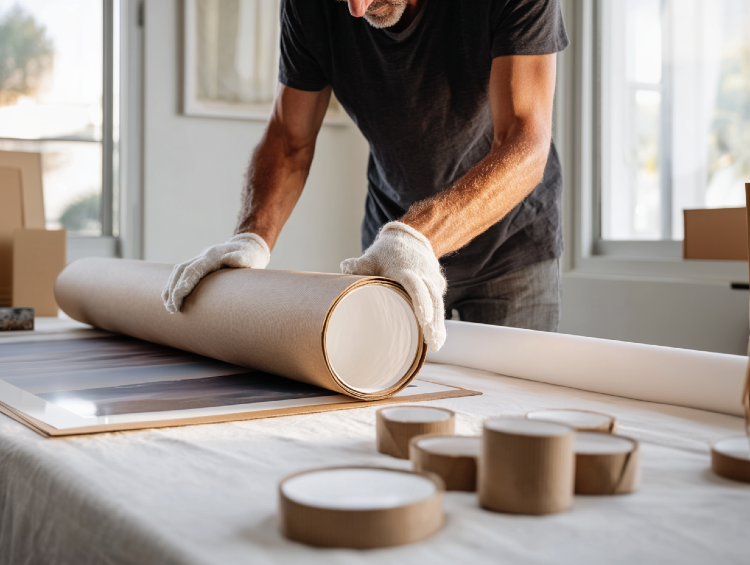
Geographic fulfillment coverage creates substantial competitive advantages. Printful's 12 global facilities serve 9 major regions with 97% of orders shipping within 5 business days, while Gelato's 130+ printing hubs enable 90% local production that reduces shipping costs and delivery times significantly. International shipping faces new challenges with the August 2025 elimination of the $800 de minimis threshold, requiring duty payments on all imports except gifts under $100.
Quality control processes vary dramatically between providers. Printful maintains industry-leading 0.24% reprint rates through 3-step quality checks (design review, production monitoring, final inspection), while professional labs like Bay Photo achieve sub-1% defect rates through expert oversight and color correction protocols. Standard industry defect rates range 2-5%, making provider selection crucial for customer satisfaction.
Packaging specifications for artwork protection include individual wrapping for fragile items, professional flat-packing for prints, and custom crating for large metal prints exceeding 30"×45". Damage prevention measures have become more sophisticated, with providers like T-Pop introducing zero-plastic packaging using 100% recycled paper materials.
Customer service metrics show significant variation across providers. Fine Art America receives mixed reviews despite 4.7/5 Sitejabber ratings, with photographers reporting response time inconsistencies. Industry standards target sub-24 hour first response times with 70-80% first contact resolution rates. Professional-focused providers like Bay Photo offer dedicated account management that justifies premium pricing for high-volume photographers.
Return and reprint policies universally cover manufacturing defects with photo evidence requirements, but color variation disputes remain contentious due to inherent printing process limitations. Most providers maintain 7-30 day reporting windows with pre-authorization requirements for returns.
Decision guide and starter checklist
Systematic provider evaluation requires defining business objectives, establishing quality standards, and implementing testing protocols that provide data-driven selection criteria.
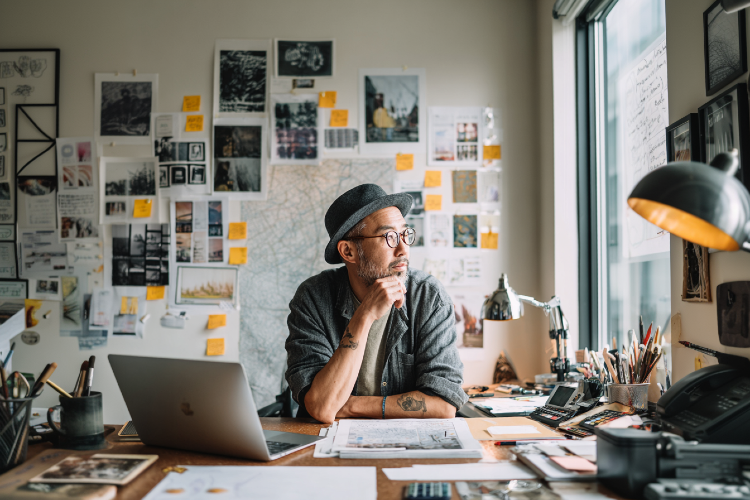
Define your business model first: premium fine-art photographers requiring exhibition-quality output need professional labs (Bay Photo, WhiteWall) despite higher costs, while volume-focused businesses benefit from white-label efficiency (Printful, Gelato) with margin optimization. Marketplace approaches (Fine Art America, Society6) suit photographers seeking passive income with minimal marketing investment.
Testing protocol implementation should include ordering identical images (3 test photos) across 2 paper types from shortlisted providers. This $50-100 investment reveals quality differences, color accuracy, packaging standards, and delivery times that determine long-term success. Compare results using Delta E measurements if professional color accuracy matters for your target market.
Pricing strategy development requires calculating total landed costs, including production, shipping, platform fees, and applicable taxes. Target 40-50% margins for sustainable growth, with premium positioning possible for unique artistic content. Start with 10-20 SKUs across different price points to test market response before scaling operations.
Performance monitoring systems should track key metrics: defect rates, customer satisfaction scores, return percentages, and profit margins per product category. Monthly analysis identifies optimization opportunities and provider performance issues before they impact business growth.
Integration complexity assessment determines implementation timelines and resource requirements. Shopify provides the fastest deployment (same day), while WooCommerce requires 1-2 weeks for proper setup and testing. API integrations need 4-8 weeks for custom development, but provide scalability advantages for growing businesses.
Technical infrastructure requirements include calibrated monitors for color accuracy, proper file preparation workflows, and backup systems for design asset management. Professional photographers should budget $2,000-5,000 for essential equipment that ensures consistent quality across all output providers.
The best print-on-demand service for photographers balances quality requirements, business model objectives, and growth scalability within realistic budget constraints. Success requires understanding technical specifications, calculating real margins, and implementing systematic testing protocols that provide objective provider comparisons. Whether choosing marketplace convenience, white-label control, or professional lab quality, informed decisions based on actual requirements rather than marketing promises determine long-term profitability and customer satisfaction.
Conclusion
Selecting the best print-on-demand for photographers requires systematic evaluation across multiple technical and business dimensions. White-label services like Printful and Gelato provide maximum control and margin potential (40-50%) for photographers willing to handle marketing independently, while marketplace platforms like Fine Art America and Society6 offer built-in audiences at the cost of reduced pricing flexibility.
Professional fine-art labs represent the premium tier for exhibition-quality work but require volume commitments and higher minimum orders. The key to success lies in matching service capabilities to your specific business model: emerging photographers benefit from marketplace exposure, established professionals prefer white-label control, and fine-art specialists demand professional lab quality standards.
Technical considerations including ICC profile support, paper selection, and color management workflows directly impact customer satisfaction and repeat business rates. Implementation should begin with small-scale testing across 2-3 providers using identical images on multiple substrates, followed by systematic margin analysis and integration planning.
2025 market developments including enhanced automation, local production networks, and improved quality control processes have elevated POD viability for serious photographers. Success requires treating POD selection as a strategic business decision rather than a simple vendor choice, with ongoing performance monitoring and optimization based on actual results rather than marketing claims.

